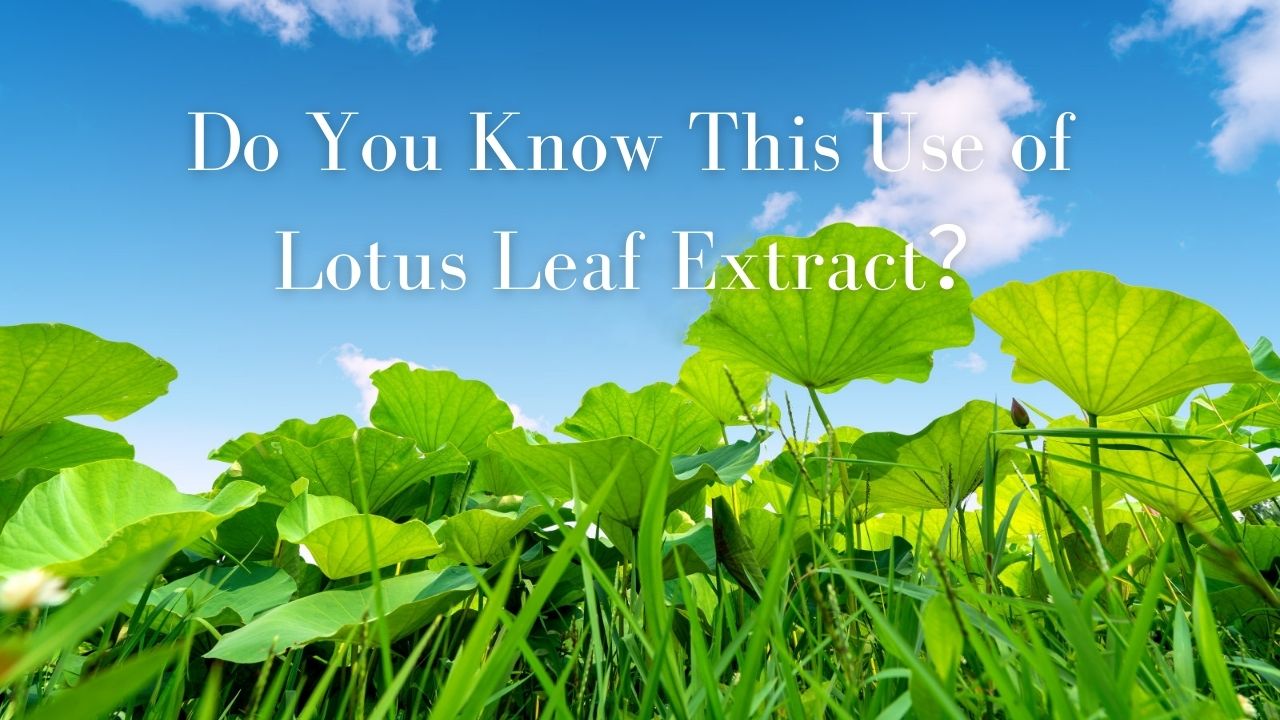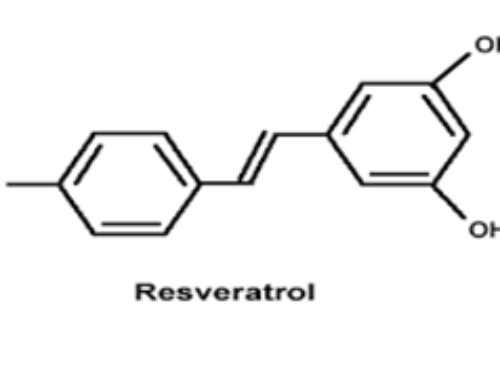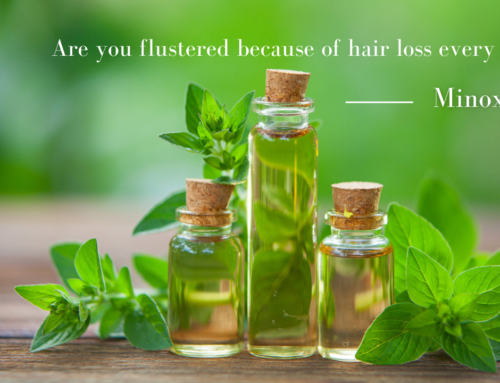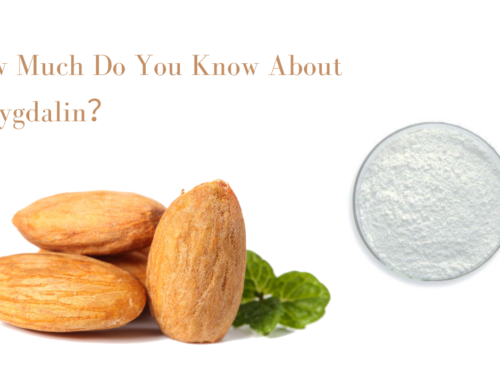When it comes to lotus leaf extract, what do you think of? Before reading this article, do you know what uses lotus leaf extract is? This article will take you to learn about lotus leaf extract and its most extensive uses.
Lotus leaf belongs to Nelumbo nucifera Gaertn of the water lily family. According to the “Compendium of Materia Medica”, “Lotus leaf is used to make you thin” and “Grows vitality and helps the spleen and stomach”. As a medicinal and food item, it has a wide range of applications in both edible and medicinal purposes. It has the effects of clearing heat and relieving heat, promoting hair and clearing Yang, cooling blood and stopping bleeding. It is mainly used for heat polydipsia, heat dampness and diarrhea. , Bloody fever, vomiting of epistaxis, blood in the stool and uterine bleeding.
In recent years, many scholars have carried out a systematic study on lotus leaf, and found that it mainly contains alkaloids, flavonoids, volatile oil and other components, In recent years, many scholars have conducted systematic studies on lotus leaves and found that it mainly contains alkaloids, flavonoids, volatile oils and other ingredients. Among them, flavonoids and alkaloids have high biological activity. The study of ingredients. Pharmacological studies have shown that lotus leaves mainly have the effects of regulating fat and losing weight, anti-oxidation, anti-aging, and antibacterial.
- Main chemical components of lotus leaves
1.1 Flavonoids
At present, nympholide A, nympholide B, myricetin-3-0-(6-p-oumaroyl)glucoside, quercetin, kaempferol, rutin, quercetin-3-O-glucuronic acid have been isolated from lotus leaves. , Quercetin-3-propyl ester, isoquercitrin and hyperoside at least ten kinds of flavonoids. It is mainly lotus leaf glycosides, followed by common flavonoids such as quercetin and isoporetin. Studies have shown that lotus leaf flavonoids have the functions of anti-oxidation, anti-aging, lowering blood fat, lowering cholesterol, and treating cardiovascular and cerebrovascular diseases.
1.2 Alkaloids
So far, 3 monomers and 16 alkaloids have been isolated from lotus leaves. The five main alkaloids are Nuciferine, N-nomuciferine, Anonaine, Pronuciferine, and Armepavine. Nuctidine is the main lipid-lowering active ingredient in lotus leaves.
1.3 Volatile essential oils
Volatile essential oils from lotus leaves are diverse in composition, including monoterpenoids, saturated fatty acids, alkaloids and aliphatic hydrocarbons. The main ingredients are trans-caryandene, trans-isolimonene, calamus oil terpene, etc.
1.4 Organic acids
Organic acids and non-volatile organic acids such as tartaric acid, citric acid, malic acid, oxalic acid, gluconic acid, succinic acid, gallic acid, n-octadecanoic acid, benzoic acid, o-hydroxybenzoic acid were found in lotus leaves.
1.5 Other ingredients
The lotus leaf also contains β-sitosterol, carotene, β-carotene, tannins, soaps, steroids, vitamin C, lotus leaf polyphenols, proanthocyanidins, carbohydrates, lipids, protein, lotus leaf polysaccharides and antioxidants. Alkaline component of mitosis.
- Lotus leaf pharmacological activity
2.1 Antioxidant
Chemiluminescence method was used to determine the scavenging effect of lotus leaf extract on free radicals. The results showed that lotus leaf is an effective free radical scavenger. The lotus leaf extract has strong antioxidant activity and protects cells from oxidative damage. ability.
2.2 Effect of lipid reduction and weight loss
Studies have shown that lotus leaf has the function of regulating blood lipids. The main active ingredients are flavonoids and alkaloids, and the main function is to promote the metabolism of cholesterol.
2.3 Antibacterial and antiviral effects
The lotus leaf contains more alkaline components, such as lotusine, nuciferine, N-desmethyl nuciferine, DN-methyl cervicine, tomatine, etc. These alkaline components can inhibit mitosis and have Strong antibacterial effect. In addition, the flavonoids, volatile oils, saponins, and glycosides in lotus leaves also have certain antibacterial activities.
- Introduction of lotus leaf extract
[English name] Lotus Leaf Extract
[Latin name] Folium Nelumbinis
[Source] This product is derived from the dried leaves of Nelumbo nucifera Gaertn.
[Raw material origin] Mainly produced in Hunan, Hubei, Fujian, Guangdong, Jiangsu, Jiangxi, harvested in summer and autumn.
[Appearance] Brown-yellow fine powder, high-purity lotus leaf is almost white crystalline powder
[Main active ingredients] lotus leaf flavonoids and lotus leaf flavonoids
[Main Specifications] Lotus Leaf Alkaline 2%-98% HPLC
Lotus leaf flavonoids 10%-20% UV
Lotus leaf ratio 10:1
Water-soluble lotus leaf extract
[Locumeine CAS No.] 475-83-2
[Molecular formula] C19H21NO2
[Molecular Weight] 295.376
Water soluble lotus leaf extract
[Production process] Fresh raw materials of lotus leaf → Crushing to 10-20 mesh coarse powder→70% ethanol reflux extraction→filtration→vacuum decompression concentration recovery alcohol→concentration→Crushing and screening→Mixed packaging.
[Main function]
- Nuciferine has excellent weight loss effect, which can effectively decompress fat in the body, prevent fat absorption, detoxify, clear heat and nourish the mind, regulate endocrine, improve greasy eating habits, and has a strong oil repellent effect.
- Nuciferine has an excellent lipid-lowering health care effect. Because obese human cells are not sensitive to insulin, the patient’s glucose tolerance often decreases, and total fat, cholesterol, triglycerides and free fatty acids often increase, showing hyperlipidemia and high fat. Proteinemia, which is the basis for inducing diseases such as diabetic atherosclerosis, coronary heart disease, cholelithiasis, hypertension, etc., nuciferine can effectively decompose and reduce body cell fat, improve its perception of insulin, and prevent the occurrence of high-fat diseases .
[ Application ]
- Application in medicine
The most clinical application of lotus leaf is in the form of compound prescription for weight loss and lipid lowering. Mainly used to prevent and treat coronary heart disease, atherosclerosis and hyperlipidemia.
- Application in food and health care products
At present on the market lotus leaf extract products are: lotus leaf pressure tablet candy, compound lotus leaf granule, mixture, capsule, various lotus leaf health tea, fruit flavor lotus leaf juice, lotus leaf honeysuckle health care gum, lotus leaf health care toothpaste, lotus leaf honey health care lozenges. Mainly used for weight loss and coronary heart disease, hypertension, diabetes, cerebrovascular disease prevention.
After reading this article, do you have a new understanding of lotus leaf extract? What other plants do you know that can be used for weight loss? Welcome to leave a message in the comment area to let me know.






Leave A Comment